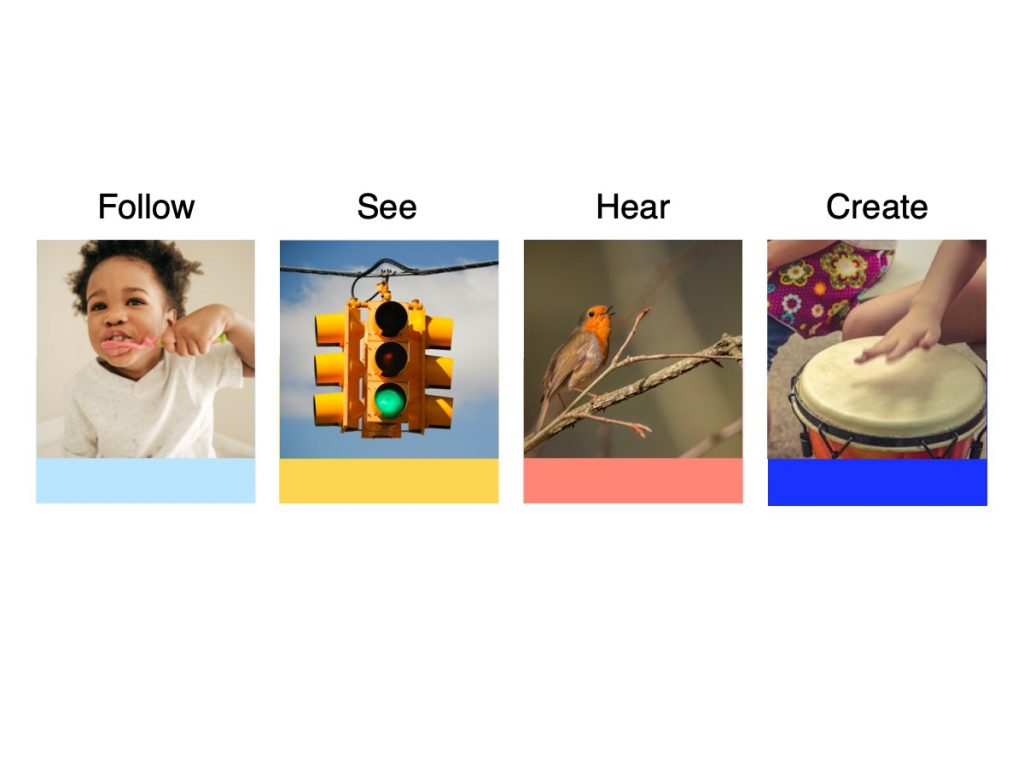
It’s 7 o’clock and time to start your daily bedtime routine with your 2-year-old son, Lucas. First Lucas takes a bath. Lucas knows that he can play with his bath toys after you wash his hair. Next, it’s time to put on pajamas and brush his teeth. Then Lucas picks out two books to read together. Finally, you give him a good night hug and kiss and turn off the lights.
How is a bedtime routine related to math? Daily routines are one way that children learn about patterns. Understanding different kinds of patterns prepares children to understand and use math. Patterns help children learn sequencing and how to make predictions. Some patterns are actions like a daily routine. Other patterns we can see, such as the alternating stripes on a shirt or the colors on a traffic light. And we can hear still other patterns, such as the beats or melody in music, or how the birds are chirping outside. We can also create our own patterns with anything from blocks to music. Children learn about patterns as they use rules to sort objects by shape, color, or size. You can scaffold a child’s pattern learning by prompting him to think about what comes next in a sequence or routine.
Children are strengthening their math skills when they manipulate, make, and observe patterns. Patterns underlie advanced skills such as understanding logic and creating order in daily life.
-
- Cardinality
- is the concept that, when counting objects, the last number represents the total number of objects in the set
- Measurement
- includes size, length, height, weight, volume, distance, and time
- Number and operations
- refers to a set of math concepts related to understanding and representing numbers and operations (e.g., addition, subtraction, multiplication, and division) and the relationships between them
- Numeracy
- is the ability to understand and reason with numbers
- One-to-one correspondence
- refers to matching one object to each number word when counting
- Subitizing
- refers to the ability to identify the number of objects in a small group of objects without counting them
- Scaffolding
- is offering the right level of support to help a child achieve more than they would be able to on their own